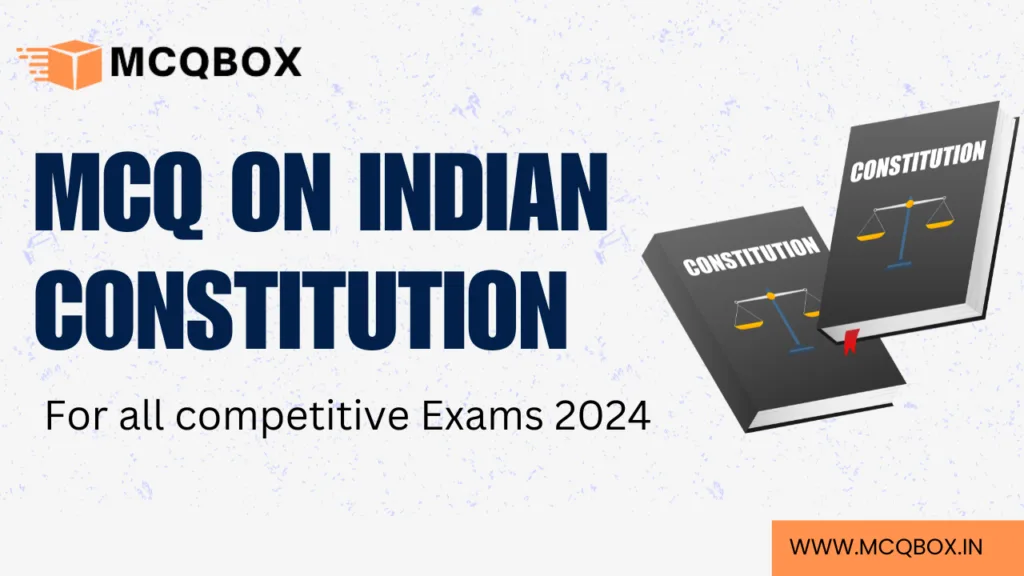MCQ on Indian Constitution: Take a quiz and test your understanding of the Indian Constitution with a comprehensive set of multiple choice questions (MCQs) on Indian Constitution. Test your knowledge on salient features of Indian Constitution, principles, articles, amendments, and more. Become familiar with the fundamental aspects of India’s governing framework by challenging yourself.
Table of Contents

MCQ on Indian Constitution
1. Who is the “Father of the Indian Constitution”?
A) Mahatma Gandhi
B) B.R. Ambedkar
C) Jawaharlal Nehru
D) Sardar Vallabhbhai Patel
Answer: B) B.R. Ambedkar
2. What is the minimum age required to become the President of India?
A) 30 years
B) 35 years
C) 40 years
D) 45 years
Answer: B) 35 years
3. Which part of the Indian Constitution deals with Directive Principles of State Policy?
A) Part I
B) Part III
C) Part IV
D) Part V
Answer: C) Part IV
4. The concept of the “Basic Structure” of the Constitution was established in which case?
A) Golaknath Case
B) Kesavananda Bharati Case
C) Keshavananda Bharti Case
D) Indira Gandhi v. Raj Narain Case
Answer: B) Kesavananda Bharati Case
5. Who can remove the President of India from office?
A) Prime Minister
B) Parliament
C) Supreme Court
D) President’s family members
Answer: B) Parliament
6. What is the tenure of the Rajya Sabha members?
A) 3 years
B) 4 years
C) 5 years
D) 6 years
Answer: D) 6 years
7. The Constitution of India was adopted on which date?
A) January 26, 1949
B) January 26, 1950
C) November 26, 1949
D) August 15, 1947
Answer: C) November 26, 1949
8. Which article of the Indian Constitution abolishes untouchability?
A) Article 17
B) Article 21
C) Article 25
D) Article 32
Answer: A) Article 17
9. Which fundamental right in the Indian Constitution is also known as the ‘Heart and Soul’ of the Constitution?
A) Right to Equality
B) Right to Freedom
C) Right against Exploitation
D) Right to Constitutional Remedies
Answer: D) Right to Constitutional Remedies
10. Which part of the Indian Constitution deals with citizenship?
A) Part II
B) Part III
C) Part IV
D) Part IIIB
Answer: A) Part II